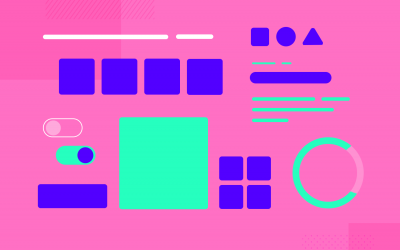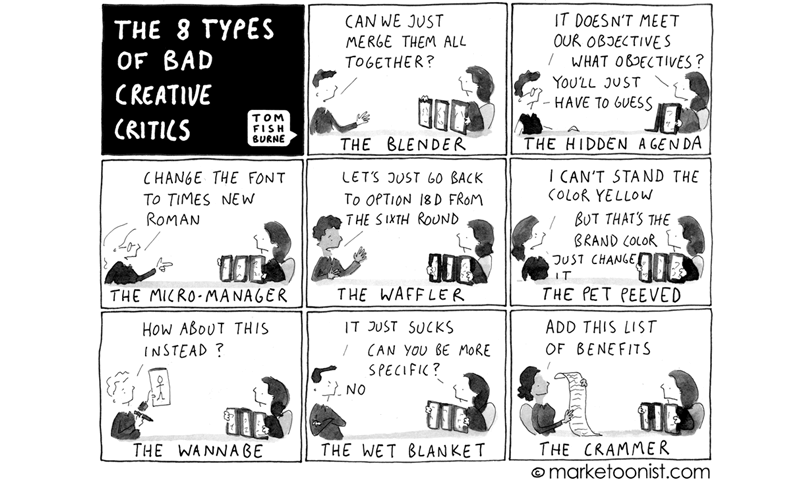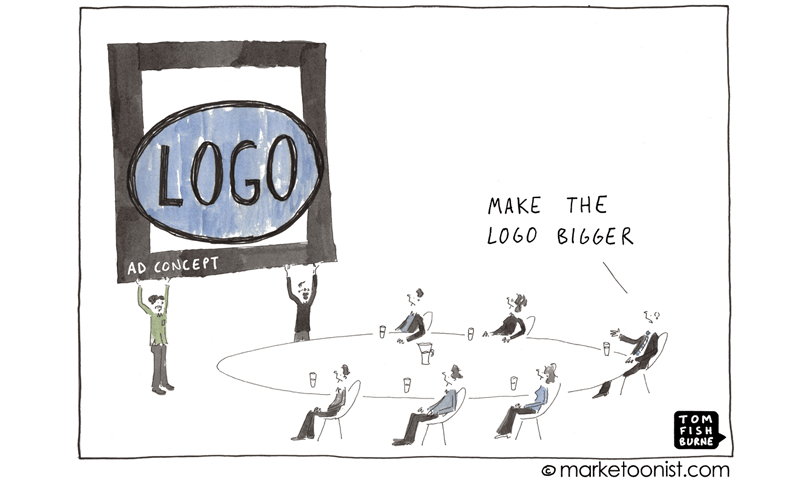Avoid design by committee with these 5 collaborative design tips and techniques
As all design teams know, you don’t produce good design by committee. Take the designing of the 2001 Pontiac Aztek for example. The Pontiac Aztek is considered to be one of the ugliest cars ever produced and a failure from day one. A mishmash of opinions about the project’s budget and design yielded abysmal production records (with only 30,000 ever made) and the discontinuation of the model after just four years. Ouch.
Fortunately, there are ways to avoid design by committee while maintaining a collaborative design process. Ask any design team and they’ll tell you that collaboration in design is essential. Design collaboration helps to condense the production process, enabling teams to deliver high-quality products faster and cheaper.
So if you’re looking to learn how to do collaborative design right, we encourage you to read on. In this post, we’ll show you why you should avoid design by committee, plus five ways to start designing better with your team.
What is design by committee?
Design by committee is a term used to describe a design project that struggles and/or produces poor-quality products because of compromised leadership and decision making.
Design by committee occurs when there are too many competing agendas during the design of a product. For instance, when a client requires that a group of stakeholders sign off on a design before approving the project, or when there are too many designers involved in a project.
As a result, the project has no unifying vision and no rational decision making about the design’s requirements or project strategy takes place.
Why should you avoid design by committee?
When you hear the words “design by committee”, you should run for the hills and here’s why:
For starters, not all feedback is constructive. Design by committee invites a group of people – who may or may not have design experience – to contribute to a discussion about aesthetics, without necessarily taking functionality and target user needs into consideration.
This produces a range of assumptions about what should take priority in a design project, without having the facts to back up those assumptions.
And remember, you’ll never know for sure how users are going to react until you release the final product – so there really is no right answer that can come out of design by committee.
Additionally, starting out with a multitude of design assumptions is costly and an ineffective approach to determining project strategy. Design by committee eats up project budget and precious production hours by forcing designers to test out flawed stakeholder assumptions instead of drawing on design expertise from the start.
Take a look at this example of what the world would look like if there were no stop signs and a major corporation was charged with inventing one through design by committee:
5 ways to avoid design by committee
It is widely accepted that quality designs are produced by talented design teams who incorporate feedback from clients without being required to make irrational compromises. So if you’re tired of seeing your ideas butchered by a committee, take a look at how you can improve design team collaboration and avoid design by committee.
Avoid design by committee. Designing collaborative prototypes that bring your team together
Avoiding design by committee lesson #1: assemble your team
Having clearly defined roles in a design project can help you solve problems that arise when there are several cooks in the kitchen, as in a design by committee.
While design teams often cover multiple roles, to avoid conflict you may want to define and designate specific roles when it comes to decision making. These include:
- The team manager (who gathers feedback from the design team, client and stakeholders)
- The final decision maker (who refines and prioritizes feedback in the decision making process). It goes without saying that this person needs superb design qualifications, which is why the final decision maker is usually the Design Lead, or the Scrum Master in Agile design projects. This person will also need expert knowledge of the product, the market and the competition.
Remember that it’s important to get feedback throughout the design process, and there’s no issue in collecting feedback from several individuals as long as the final decision maker uses their judgement to decide what feedback to implement, what might be best kept for another time, and what needs to be scrapped.
By clearly defining your team’s roles, you can establish a hierarchy in the decision making process and avoid any overstepping of boundaries. Hint: this is a great way to include the client in decision making, without forcing your team to make poor design decisions.
Atlassian has a great exercise on defining roles and responsibilities in order to help teams perform at their best – check it out here.
Avoiding design by committee lesson #2: define feedback parameters
In order to get feedback you can use to move forward with your designs, you need to clarify your project’s goals, communication strategy, and methodology to meet client needs.
Think about what your team and clients will be basing their feedback on in order to help you define feedback parameters. For instance:
- Is your design aligned around the client’s brief/requirements/guidelines?
- Does your design accurately translate the personality of the organization?
- Does your design contain all relevant information? Including anything that hasn’t been specific during the definition phase will only waste your team’s time and resources, and make the client question what’s going on with the project budget (and rightly so!)
Additionally, including a process flowchart or a product roadmap when you present designs to clients will help them understand the overall arc of the project and visualize your progress.
Tip: narrow down on feedback as you iterate and progress through the design process in order to limit scope creep.
Avoiding design by committee lesson #3: find your ideal communication method
Establishing a standardized communication process is the key to successful design collaboration. It ensures that everyone is on the same page, keeps projects organized and avoids the need for rework.
Your communication efforts will also make it clear which stages of the design process members of the team need to be included in, therefore helping you avoid misunderstandings and design by committee-like situations.

A great way to get the design team communicating is to have everyone work across the same platform. For instance, you could implement a collaborative prototyping process, which will help streamline the workflow between team members,
Justinmind offers Teamwork features that allow designers to work together on the same prototype at the same time, giving and receiving feedback in real-time.
Avoiding design by committee lesson #4: gather feedback effectively
As mentioned above, one of the problems with design by committee is that the user often gets forgotten. Clients focus on their business requirements and what looks good, rather than target user needs.
A great way to gather feedback outside of designing by committee is to do user testing. In fact, the only way to gather feedback that will help you achieve high user satisfaction is by testing with users. Without valuable feedback from your target audience, you are simply designing in a vacuum – much like Icons8 Magazine did in their recent redesign, which failed by the way.
Prototyping is an excellent approach to user testing as decisions are motivated by qualitative and quantitative feedback based on the prototype, not by group opinion.
With Justinmind, you can actually test your prototypes directly with users by sending them a link via email directly, or by setting your prototypes up with any of the major user testing tools. Note that our Review feature can also be used to share designs with the client and have them comment on them – another smart way to keep your client close, but not too close.
Avoiding design by committee lesson #5: pay attention to presentation
With some clients, it’s impossible to avoid the design by committee approach altogether. When this happens, it’s important to keep calm and let your design do the talking.

If you present your designs effectively, you’re half way towards getting a ‘yes’ out of your client. Consider presenting your designs as wireframes to focus on functionality or as mockups to aid imagination.
You can easily do this with a wireframe tool like Justinmind, where you can easily present a slides within the wireframe itself. It gives you and your client a shared design language and enables you to express tricky concepts and user experience design rationale.
Pro tip: when presenting designs to a committee, don’t offer them multiple options. This puts them right back in the driver’s seat, degrading your design expertise and creating extra work. However if you must present multiple designs, stick to three at most, and always lead with your preferred choice.
5 ways to design by team and not by committee – the takeaway
Design by committee is the worst. Avoid it at all costs!
Remember, the people involved in a design project should be pushing towards a common goal, not competing to get their agenda implemented. Design together, thrive together. Our five tips for designing collaboratively with your team and client will help you do just that.
Related Content
 We created a list of the top UI design principles that capture some of the most interesting faces of digital design. Check them out!10 min Read
We created a list of the top UI design principles that capture some of the most interesting faces of digital design. Check them out!10 min Read Crafting landing pages that convert doesn't have to be tough. Here’s our snapshot of 30 landing page examples with awesome UX that nailed it!12 min Read
Crafting landing pages that convert doesn't have to be tough. Here’s our snapshot of 30 landing page examples with awesome UX that nailed it!12 min Read How important are lists in UI design? How much do they affect usability and what’s the best way to design them? In this guide, we'll explore the elements that make up a great list UI design and look at some inspiring examples!15 min Read
How important are lists in UI design? How much do they affect usability and what’s the best way to design them? In this guide, we'll explore the elements that make up a great list UI design and look at some inspiring examples!15 min Read




